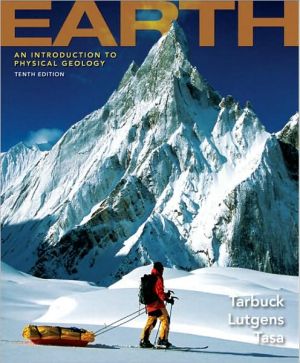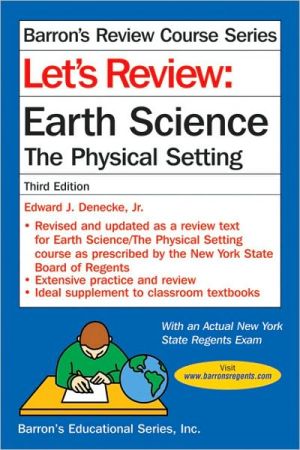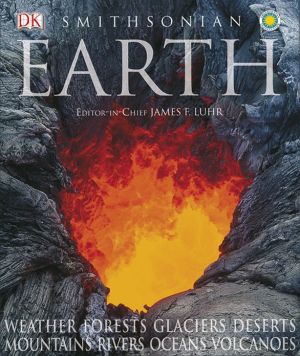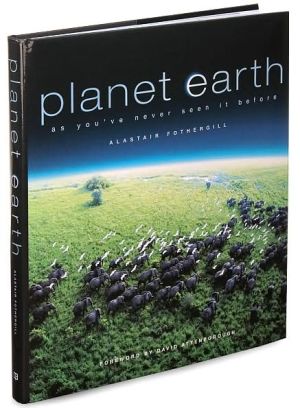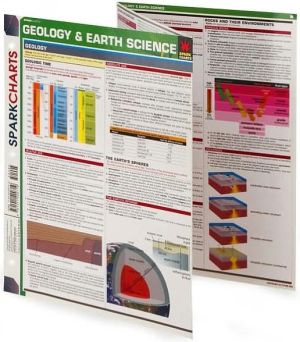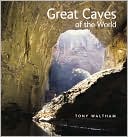Earth: An Introduction to Physical Geology
With its strong focus on readability and illustrations, this trusted best seller makes an often-complex subject more accessible for readers like you. It offers a meaningful, non-technical survey that is informative and up-to-date for learning basic principles and concepts. For the Tenth Edition, the text’s design and figures have been updated, and the chapter on climate change has been revised significantly.
Search in google:
With its strong focus on readability and illustrations, this trusted best seller makes an often-complex subject more accessible for readers like you. It offers a meaningful, non-technical survey that is informative and up-to-date for learning basic principles and concepts. For the Tenth Edition, the text’s design and figures have been updated, and the chapter on climate change has been revised significantly. Booknews A text/CD-ROM package for science majors and nonmajors taking a first course in geology. Distinguishing features include nontechnical language, exciting color photos and detailed diagrams, and focus on basic principles, environmental issues, and Earth as a system. This sixth edition includes chapter summaries, key terms, and review questions, plus new special interest boxes. The CD-ROM contains animations, activities, and enhanced text art to reinforce key geologic concepts. Annotation c. by Book News, Inc., Portland, Or.
Preface \ Preface\ Earth is a very small part of a vast universe, but it is our home. It provides the resources that support our modern society and the ingredients necessary to maintain life. Therefore, knowledge of our planet is critical to our well being and, indeed, vital to our survival. The science of geology contributes greatly to our understanding of planet Earth.\ In recent years, media reports have made us increasingly aware of the geological forces at work on our planet. News stories graphically portray the violent force of a volcanic eruption, the devastation generated by a strong earthquake, and the large numbers left homeless by landslides and flooding. Such events, and many others as well, are destructive to life and property, and we must be better able to understand and deal with them. To comprehend and prepare for such events requires an awareness of how science is done and the scientific principles that influence our planet, its rocks, mountains, atmosphere, and oceans.\ The Seventh Edition of Earth: An Introduction to Physical Geology, like its predecessors, is a college-level text that is intended to be a meaningful nontechnical survey for students taking their first course in geology. In addition to being informative and up-to-date, a major goal of Earth is to meet the need of students for a readable and user-friendly text, a book that is a highly usable 'tool' for learning the basic principles and concepts of geology.\ Distinguishing Features\ Readability\ The language of this book is straightforward and written to be understood. Clear, readable discussions with a minimum of technical language are the rule.The frequent headings and subheadings help students follow discussions and identify the important ideas presented in each chapter. In the seventh edition, improved readability was achieved by examining chapter organization and flow, and writing in a more personal style. Large portions of the text were substantially rewritten in an effort to make the material more understandable.\ Illustrations and Photographs\ Geology is highly visual. Therefore, photographs and artwork are a very important part of an introductory book. Earth, Seventh Edition, contains dozens of new high-quality photographs that were carefully selected to aid understanding, add realism, and heighten the interest of the reader. The illustrations in each new edition of Earth keep getting better and better. In the seventh edition more than 150 pieces of line art are new or substantially redesigned. The new art illustrates ideas and concepts more clearly and realistically than ever before. The art program was carried out by Dennis Tasa, a gifted artist and respected geological illustrator.\ Focus on Learning\ When a chapter has been completed, three useful devices help students review. First, the Chapter Summary recaps all of the major points. Next is a checklist of Key Terms with page references. Learning the language of geology helps students learn the material. This is followed by Review Questions that help students examine their knowledge of significant facts and ideas. Each chapter closes with a reminder to visit the all-new and greatly improved Web site for Earth, Seventh Edition. It contains many excellent opportunities for review and exploration.\ Earth as a System\ An important occurrence in modern science has been the realization that Earth is a giant multi-dimensional system. Our planet consists of many separate but interacting parts. A change in any one part can produce changes in any or all of the other parts—often in ways that are neither obvious nor immediately apparent. Although it is not possible to study the entire system at once, it is possible to develop an awareness and appreciation for the concept and for many of the system's important interrelationships. Therefore, beginning with an expanded discussion in Chapter One, the theme of 'Earth as a System' recurs at appropriate places throughout the book. It is a thread that 'weaves' through the chapters and helps tie them together.\ Several new and revised special-interest boxes relate to 'Earth as a System'. To remind the reader of this important theme, the small icon you see at the beginning of this section is used to mark these boxes.\ People and the Environment\ Because knowledge about our planet and how it works is necessary to our survival and well being, the treatment of environmental issues has always been an important part of Earth. Such discussions serve to illustrate the relevance and application of geological knowledge. With each new edition, this focus has been given greater emphasis. This is certainly the case with the seventh edition. The text integrates a great deal of information about the relationship between people and the natural environment and explores applications of geology to understanding and solving problems that arise from these interactions.\ In addition to many basic text discussions, 19 of the text's special-interest boxes involve the 'People and the Environment' theme and are quickly recognized by the distinctive icon you see at the beginning of this section.\ Maintaining a Focus on Basic Principles and Instructor Flexibility\ The main focus of the seventh edition remains the same as in the first six—to foster a basic understanding of physical geology. As much as possible, we have attempted to provide the reader with a sense of the observational techniques and reasoning processes that constitute the discipline of geology.\ The organization of the text remains intentionally traditional. Following the overview of geology in the introductory chapter, we turn to a discussion of Earth materials and the related processes of volcanism and weathering. Next, a discussion of a most basic topic, geologic time, is followed by an examination of the geological work of gravity, water, wind, and ice in modifying and sculpturing landscapes. After this look at external processes, we examine Earth's internal structure and the processes that deform rocks and give rise to mountains. Finally, the text concludes with chapters on resources and the solar system. This particular organization was selected largely to accommodate the study of minerals and rocks in the laboratory, which usually comes early in the course.\ Realizing that some instructors may prefer to structure their courses differently, we made each chapter self-contained, so that chapters may be taught in a different sequence. Thus, the instructor who wishes to discuss earthquakes, plate tectonics, and mountain building prior to dealing with erosional processes may do so without difficulty. We also chose to introduce plate tectonics in the first chapter so that this important and basic theory could be incorporated in appropriate places throughout the text.\ More About the Seventh Edition\ The seventh edition of Earth represents a thorough revision. Every part of the book was examined carefully with the dual goals of keeping topics current and improving the clarity of text discussions. Based on feedback from reviewers and students, we believe we have succeeded.\ Here are some examples of what is new in the seventh edition of Earth.\ \ Fifteen of the special-interest boxes are new. Some highlight recent geologic events, such as the devastating earthquake near Ismit, Turkey, in 1999 (Box 16.4). Others are examples that help develop an awareness of Earth as a system such as Box 6.1, 'The Carbon Cycle and Sedimentary Rocks.' Still other, new boxes focus on environmental issues and on how geologists study our planet.\ A new feature, 'Students Sometimes Ask...,' is now part of every chapter. A few questions and answers are distributed at appropriate places in each chapter and identified by a large question mark. They are the kind of questions inquisitive students might ask during class sessions and are intended to add interest and relevance to text discussions. We are indebted to Professor Alan Trujillo at Palomar College for this excellent idea and for providing many of the questions and answers we used.\ Chapter 1, An Introduction to Geology, offers new discussions of 'The Science of Geology,' 'Geology, People, and the Environment,' and revised and expanded treatment of 'Earth's Internal Structure.' The section on the 'Dynamic Earth' is a stronger, more complete first introduction to plate tectonics.\ Chapter 3, Igneous Rocks, and Chapter 7, Metamorphism and Metamorphic Rocks, have been significantly revised, rewritten, and reorganized. These chapters now provide stronger technical explanations and easier to follow discussions.\ Much of the material in Chapter 4, Volcanoes and Other Igneous Activity, is new. The revision includes expanded treatment of volcanic structures, volcanic hazards, calderas, and the relationship between plate tectonics and igneous activity. These discussions are now clearer and organized in a more logical manner.\ Several chapters dealing with external processes have new discussions. Examples include 'Submarine Landslides' (Chapter 9), 'Causes and Types of Floods' (Chapter 10), and 'Interactions Between Groundwater and Streams' (Chapter 11).\ Chapter 15, Crustal Deformation, features a new introduction to structural geology and revised and expanded sections on 'Force, Stress, and Strain,' and 'How Rocks Deform.'\ Rewritten and updated discussions on 'Intensity Scales' and 'Magnitude Scales' appear in Chapter 16, Earthquakes.\ Chapter 19, Plate Tectonics, has a reorganized and revised section entitled 'Plate Tectonics: The New Paradigm' and completely revised and rewritten sections on 'Divergent Plate Boundaries' and 'Continental-Continental Convergence.' The chapter also includes a new discussion of 'Measuring Plate Motion' and a revised look at 'The Driving Mechanism.'\ Chapter 20, Mountain Building and the Evolution of Continents, offers clearer, more logical organization, as well as new material on 'Mountain Building at Convergent Boundaries' and 'Accretion of Foreign Terranes.'\ Expanded and updated treatment of 'Carbon Dioxide and Global Warming' and 'Wind Energy' can be found in Chapter 21, Energy and Mineral Resources.\ \ The Teaching and Learning Package\ The authors and publisher have been pleased to work with a number of talented people who produced an excellent supplements package. This package includes the traditional supplements that students and professors have come to expect from authors and publishers, as well as some new kinds of supplements that involve electronic media.\ For the Student\ Geode III CD-ROM. Each copy of Earth, Seventh Edition, comes with GEODe III, by Ed Tarbuck, Fred Lutgens, and Dennis Tasa of Tasa Graphic Arts, Inc. GEODe III is a dynamic program that reinforces key concepts by using animations, tutorials, and interactive exercises. This new version has been updated and reorganized to provide content that more closely correlates to the text's content. A special GEODe III icon appears throughout the book wherever a text discussion has a corresponding GEODe III activity. This special offering gives students two valuable products (GEODe III and the textbook) for the price of one.\ Companion Web Site. A completely new Web site, specific to the text, contains numerous review exercises (from which students get immediate feedback), exercises to expand one's understanding of geology, and resources for further exploration. This Web site provides an excellent platform from which to start using the Internet for the study of geology. Please visit the site.\ Study Guide. Written by experienced educator Richard M. Busch of West Chester University of Pennsylvania, the study guide helps students identify the important points from the text and provides them with review exercises, study questions, self-check exercises, and vocabulary review.\ For the Professor\ Instructor's Resource Box. This valuable aid is organized by chapter for ease of use and includes a wealth of valuable teaching tools.\ \ Instructor's Manual\ Test Item File. Averages more than 100 multiple-choice, true/false, and short-answer questions per chapter.\ Transparencies. Includes more than 350 transparencies, including every Dennis Tasa illustration from the text.\ Slides. Includes 150 photos, many from geologist and professional photographer Martin Miller.\ Digital Image Gallery for Interactive Teaching (DIGIT CD-ROM). All illustrations from the text, the slide set images, animations from GEODe III, and many text photos, in high-resolution JPEG files that can be easily imported into PowerPoint\ Customizable PowerPoint lecture presentations\ Prentice Hall Custom Test CD-ROM. Available for Mac and Windows.\ \ For instructors who want only selected resources, each of these items is also available individually.\ The New York Times Themes of the Times—Geology. This unique newspaper-format supplement features recent articles about geology from the pages of The New York Times. This supplement, available at no extra charge from your local Prentice Hall representative, encourages students to make connections between the classroom and the world around them.\ Acknowledgments\ Writing a college textbook requires the talents and cooperation of many individuals. We appreciate the contributions of Professor Alan Trujillo at Palomar College. Alan not only contributed the idea and much of the material for the new 'Students Sometimes Ask...' feature, but he also convinced us to add many more word etymons to the text and provided us with the information we needed to do so. Working with Dennis Tasa, who is responsible for all of the outstanding illustrations, is always special for us. We not only value his outstanding artistic talents and imagination but his friendship. We are grateful to Professor Ken Pinzke at Southwestern Illinois College. In addition to his many helpful suggestions regarding the manuscript, Ken is responsible for the text's all new Web site. Ken is an important part of our team and a valued friend as well. Thanks also to Nancy Lutgens, who helped us greatly in the preparation of this manuscript.\ Special thanks goes to those colleagues who prepared in-depth reviews. Their critical comments and thoughtful input helped guide our work and clearly strengthened the text. We wish to thank: Kevin Cornwell, California State University-Sacramento; Michael H. Engel, University of Oklahoma; Mian Liu, University of Missouri-Columbia; Harmen D. Maher, Jr., University of Nebraska at Omaha; Kay McQueen, Oklahoma State University; James S. Reichard, Georgia Southern University; Isabelle Sacramento Grilo, San Diego State University; Donald P. Schwert, North Dakota State University; Alan P. Trujillo, Palomar College; Nick Zentner, Central Washington University.\ We also want to acknowledge the team of professionals at Prentice Hall. As always, thanks to Paul Corey, President of Prentice Hall's Engineering, Science, and Math division. We sincerely appreciate his continuing strong support for excellence and innovation. Thanks also to our administrative editor, Patrick Lynch. His excellent communication skills and helpful and easygoing style contributed greatly to the project. The production team, led by Ed Thomas, has once again done an outstanding job. We appreciate the fine photo research work of Tobi Zausner and the excellent copyediting skills of Barbara Booth. All are true professionals with whom we are very fortunate to be associated.\ Edward J. Tarbuck\ Frederick K. Lutgens
1. An Introduction to Geology2. Plate Tectonics: A Scientific Revolution Unfolds3. Matter and Minerals4. Magma, Igneous Rocks, and Intrusive Activity5. Volcanoes and Volcanic Hazards6. Weathering and Soil7. Sedimentary Rocks8. Metamorphism and Metamorphic Rocks9. Geologic Time10. Crustal Deformation11. Earthquakes and Earthquake Hazards12. Earth’s Interior13. Divergent Boundaries: Origin and Evolution of the Ocean Floor14. Convergent Boundaries: Origin of Mountains15. Mass Wasting: The Work of Gravity16. Running Water17. Groundwater18. Glaciers and Glaciation19. Deserts and Winds20. Shorelines21. Global Climate Change22. Earth’s Evolution through Geologic Time23. Energy and Mineral Resources24. Planetary Geology
\ BooknewsA text/CD-ROM package for science majors and nonmajors taking a first course in geology. Distinguishing features include nontechnical language, exciting color photos and detailed diagrams, and focus on basic principles, environmental issues, and Earth as a system. This sixth edition includes chapter summaries, key terms, and review questions, plus new special interest boxes. The CD-ROM contains animations, activities, and enhanced text art to reinforce key geologic concepts. Annotation c. by Book News, Inc., Portland, Or.\ \
